There are more types of pollution than you could shake a lichen-laden stick at. Available in more flavors than Baskin Robbins, the three most commonly encountered, soil, air, and water pollution take a visible toll on the environment. But it would be a mistake to discount the impact other forms of pollution have on the world around us.
Noise pollution, for example, might conjure up images of angry neighbors hammering on ceilings. In truth, excess noise makes it difficult for wildlife to hunt, navigate, and mate.
Meanwhile, thermal pollution drives climate change, light pollution disrupts plant growth, and radioactive contamination is so harmful that it scarcely needs examining.
Still, even though the effects various types of pollution have on the ecosystem remain a serious concern, it would be remiss of us to overlook the human cost. Research shows that air pollution alone causes over eight million deaths worldwide every year.
So although the term pollution evokes images of floating trash, oil spills, smog-bound cityscapes, and radioactive cesspits, the truth is often less visceral. Of all the damage caused by the different types of pollution, few are as sinister as the ones you cannot even see.
What are Pollutants?
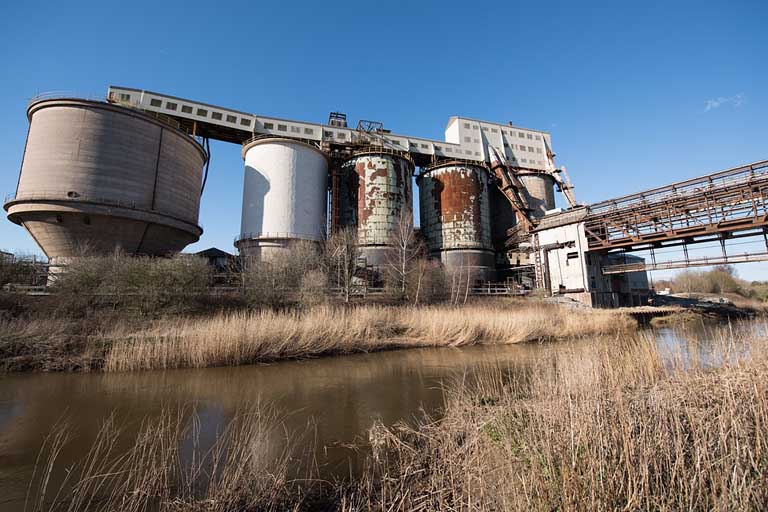
Image Source: Pixabay
Pollutants are physical and chemical elements that cause undesirable changes in the land, air, water, or indeed, any aspect of our physical environment. In many cases, such deterioration of the ecosystem is on full display. In cities across the world, pollutants pour from chimney stacks in billowing clouds of poisonous grey.
Our rivers, streams, and waterways also fail to hide the corrupting influence of human industry. Choked with debris, and unsafe to fish, the types of pollution found in water range from plastic to heavy metals, sewage, dyes, and other corruptions too hideous to contemplate. Dead rivers and barren lakes have become increasingly common in recent times. Even human-made bodies of water such a California’s Salton Sea represent an environmental catastrophe that lacks a workable solution.
Types of Pollutants
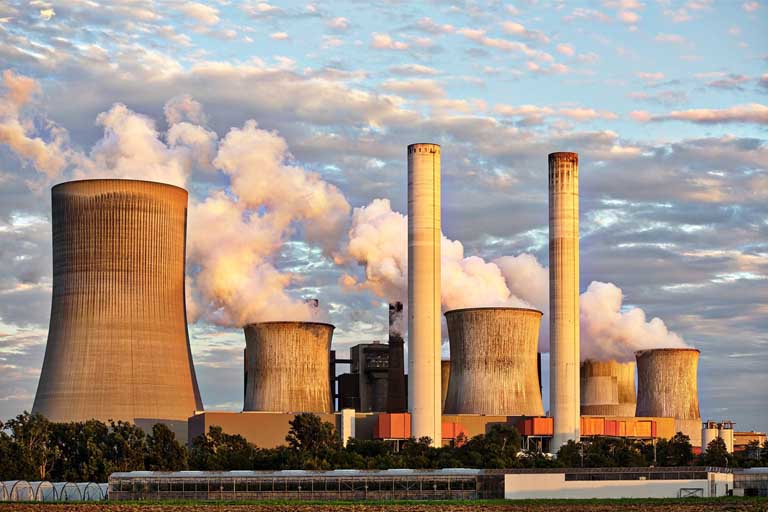
Image Source: Pexels
Still, though the effects of pollution are often there for all to see, that tells us little about the kinds of pollution wreaking all the havoc. Environmental pollutants do, after all, come in various forms: gas, liquid, or stable states of matter seem apparent enough; it is, however, essential to remember that some types of pollutants manifest as pure energy.
Gaseous Pollutants
The Earth’s atmosphere consists of a dynamic system of natural gasses, some of which are genuinely poisonous but which nevertheless play a role in sustaining life on the planet. Indeed, the atmosphere itself is a sophisticated defense mechanism capable of absorbing quantities of various types of pollutants. But it has its limits.
When large amounts of harmful gas elements find themselves introduced into the atmosphere, they embark on a journey that leads them, ultimately to the ozone layer. This band of gas sits in the upper atmosphere between altitudes of 15 and 35 km above the earth’s surface. It acts as the ultimate sunscreen, filtering out levels of ultraviolet radiation which would otherwise make life on earth untenable.
Common types of pollution such as chlorofluorocarbon release chlorine and bromine when exposed to UV radiation two compounds that destroy ozone by stripping them of oxygen molecules. The result is potentially catastrophic. The severe damage already done to the planet’s outermost layer has put all living organisms on Earth on notice.
Most gaseous pollutants in the environment come from emissions from cars, combustion in factories, and power plants that burn coal. The most common gaseous pollutants include the oxides of carbon, sulfur, and nitrogen.
The growth of electric vehicles helps mitigate the problem somewhat, but even they cannot lay claim to a pure carbon-neutral heritage. The electricity that powers them may come from fossil fuel. The factories that built them might well be polluting as well.
Liquid Pollutants
Liquid pollutants often poured on to the land or discharged into rivers, typically come from liquid waste. These may include sewage wastes with organic excreta (consisting of urine and feces pollutants), industrial wastewaters, and liquid-based agricultural chemicals used in farming.
The most significant sources of liquid pollutants destroying rivers of all sizes around the planet are manufacturing factories. Their production processes generate so many chemical by-products that clean up costs get prohibitive, very quickly. Government agencies such as the EPA place restrictions on the amount and types of pollution companies can dump. But the quotas, ever generous considering the seriousness of it all, have in recent years relaxed still further.
Whether via indifference, thrift, or the simple fact that such pollutants are challenging to recycle, contaminants in liquid wastes eventually end up absorbed into the soil or washed into the ocean.
Solid Matter Pollutants
The pollutants most of us encounter on a day to day basis arrive in solid form. These tactile forms of pollution exist as a direct consequence of the way modern society has slaved itself to the mantra of progress. Plastic bags and straws receive much of the bad press, but in truth, packaging of many different kinds form part of a broader problem. Still, a hierarchy of sins exists with some items proving more problematic than others. Recycling efforts allow for the re-using of specific materials while others biodegrade naturally.
But one type of product is without a doubt, unable to lay claim to any redemption. Everywhere on the planet – even in the deep sea where humans have never ventured – plastics are screwing up the ecosystem.
Ordinary individuals who throw away plastics are principal suspects in the case against environmental pollution. But households, businesses, and factories produce all kinds of solid waste, and not everything that can be recycled is recycled — metals, paper, clothes, solid chemicals, diapers, and half-used cleaning products.
Sooner or later, such pollutants make their way into the air, landfills, or the water.
Energy Pollutants
Unutilized or misused energy is yet another way in which human beings are abusing the environment. Noise pollution, as we have seen, has a deleterious effect on local wildlife.
But when the tranquility of a workplace, residential area, or a public space finds itself disrupted via sound pollution, the effects often cascade. Hearing damage, migraines, hypertension, heightened stress, and increased risk of coronary artery disease; all have links to noise pollution.
Other forms of energy, manifesting as heat or radiation stem from large scale human activity. Nuclear power stations, although essentially carbon-neutral, produce waste that remains hazardous to life for hundreds if not thousands of years.
Types of Pollution
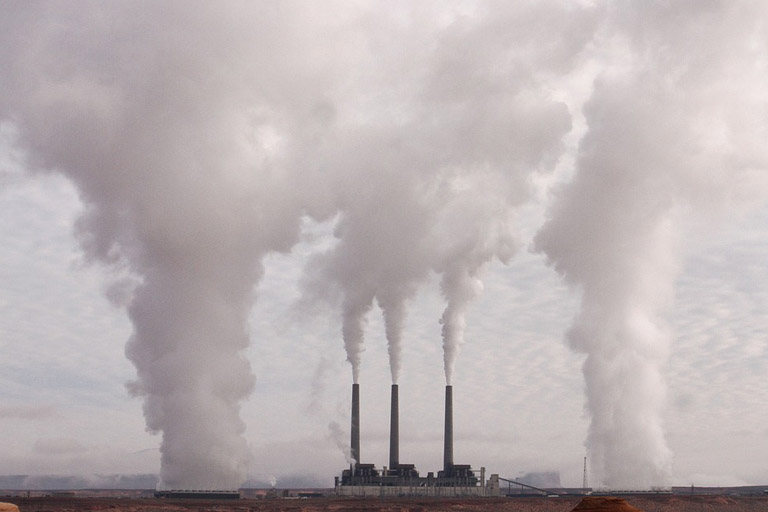
Image Source: Pixabay
The distinction between pollution and pollutants might not seem that obvious at first, but the difference is essential. Where pollutants consist of pretty much anything that upsets the balance of any given ecosystem, pollution is the act of polluting itself. And how humanity pollutes are effectively uncountable.
Air Pollution
Air pollution manifests as the contamination of air by smoke, dust, or harmful gases, mainly oxides of carbon, nitrogen, and sulfur in abnormal quantities. Air pollution scales upwards with frightening ease. From the individual household releasing minute amounts of gas from air condition units or fridges to large scale industrial developments belching vast columns of smoke 24 hours a day, seven days a week.
Clean air consists of 78% nitrogen, 21% oxygen, and less than 1% trace gasses by volume. Other gases, including known pollutants of oxides of carbon, sulfur, and nitrogen, may exist in clean air but only in trace quantities. Polluted air, on the other hand, contains abnormal amounts of these gases along with other particulate matter such as dust, soot, and microscopic plastics floating in it.
And that’s a huge problem. Air quality is the one thing that binds almost all living organisms together. Respiration is one of the tests biologists use to help define life; almost everything needs to breathe.
From the largest land mammals down to the tiniest shrub contaminated air leaves its mark. Aquatic life, already under threat from water pollution receives little in the way of special treatment either. Fish don’t separate oxygen from the water on a molecular level; they breathe oxygen dissolved into the water by forcing it through their gills. Any oxygen contaminated above the waves inevitably ends up contaminated below them as well.
Many gaseous pollutants such as carbon dioxide and carbon monoxide are odorless and invisible are therefore challenging to detect at the source. More visible is the inevitable smog that follows wide-scale abuse of the atmosphere in specific locales.
Two types of smog exist. The first, known as sulfurous smog, results from the large scale burning of fossil fuels, especially coal. In 1952 London was crippled by a haze that brought the city to its knees and resulted in thousands of fatalities.
The second type of Smog is one more familiar to residents of Los Angeles and Beijing. Photochemical smog arrises from concentrations of hydrocarbons and nitrogen oxide released by automobiles.
Regardless of the specific pollution at play, an air quality warning is an increasingly common occurrence in most metropolitan areas. In the USA, the EPA issues an Air Quality Index (AQI) reading every single day.
Water Pollution
British poet, W. H. Auden once wrote: “Thousands have lived without love, not one without water.” He was certainly not the last person to recognize the importance of water to biology. And yet, according to UNESCO, over 80 percent of drinkable water bodies in the world are polluted to some extent.
Water pollution is one of the most accessible forms of contamination to observe. In almost all cases, rivers that pass through or close to large scale human settlements are unhealthy. Many don’t even pass the smell test. Few people would want to eat fish caught from a line dangled off London Bridge.
Water is supposed to be odorless, colorless, and transparent and lacking in suspended particulates. But even water that appears clean might not be safe to drink; it could still be chemically polluted and unsafe. Some common water pollutants, especially pesticides and micro-organisms responsible for waterborne diseases, remain invisible to the naked eye.
The presence of heavy metal elements such as mercury, lead, cadmium, and chromium, complicate things still further.
These, along with persistent organic pollutants (POP), all of which are toxic to animal and plant life. Indeed, individual animals accrue concentrations of heavy metals high enough to pose a threat to human levels
Polluting waterways and water bodies seriously affects surface waters such as lakes and rivers, groundwater in aquifers, and of course, the ocean. Considering that the processes of the water cycle connect all water bodies on the planet, pollution in one ultimately affects all.
Land Pollution
There quality of soil in many places on the surface of planet Earth thanks to the improper disposal of solid wastes and misuse of resources is at an all-time low. Soil pollution, sometimes referred to as land pollution, links to water and air pollution in different ways.
Landfills of plastics and other wastes are a common sight in most modern cities. Indeed they have become the poster-child for the lack of self-restraint humanity engages with daily.
Household wastes, which make up most landfills in cities and towns, consists mostly of plastic bags. Much of these carry food waste or fecal matter that will eventually decompose. As it does so, it attracts rodents and insects – both of which transmit diseases to humans. But worse is to come.
When organic wastes on land decompose, they also create a highly concentrated liquid pollutant called leachate, which sips into the soil. Leachate contains highly toxic chemicals and high levels of pathogenic microorganisms as well as organic compounds.
Liquid wastes with pathogenic micro-organisms or toxic chemicals discarded on the land surface gradually seep into the soil. They may even percolate underground into the water bodies such as aquifers, rivers, and lakes.
These pollutants affect the people and animals living within and around the polluted land. It’s not uncommon for plants to absorb and ingest the harmful elements contained in these pollutants, and in doing so, they segue into the food chain.
Improper use of pesticides, and the presence of monocultures, and excessive spraying of farming chemicals make things worse. Indeed, they blend quite nicely with damage caused by unsustainable logging, forest clearing, and toxic spills. The net effect on the quality of the soil requires little in the way of imagination.
Noise Pollution
Loud music, hooting cars in traffic, and the neighbor’s dog barking throughout the night are just some of the unwanted noises we hear in our everyday lives. They have become a part of the urban culture.
However, when the background noise induces headaches. When the neighbors blare music that denies you sleep. Then, the sound stops acting as a mere irritant and becomes a pollutant in its own right.
Noise pollution is everywhere, but it generally gets less attention than other irritants. Based as it is on energy, it is fundamentally non-tactile. It cannot be seen, touched, tasted, or smelled. But such a lack of substance does not prevent it from doing great harm to the environment.
Such observations make more sense when looked at from the perspective of large scale industrial noise pollution. During mining operations, for example, blasting, drilling, crushing, and running generators often produce high-intensity noise. In many cases, they produce so much of it that they cause permanent damage to the ecosystem for miles around.
Birds that rely on oral communication to find a mate get drowned out. Bats, ever-reliant on echolocation, are unable to hunt. In humans, as we have seen, sound pollution causes a variety of health issues.
Industrialization and its heavy machines, when combined with poor urban planning, often finds itself responsible for most of the effects brought about by sound pollution. But it doesn’t stop there. Sporting events, cultural activities, and transportation create a lot of noise pollution of their own.
Light Pollution
Light pollution is often the most overlooked and least regulated type of pollution. The invention of the electric bulb was a significant milestone in the advancement of humanity, but the planet is paying a hefty price for it nonetheless. You see, the light bulb has a dark side. It has stolen the night.
Most cities today experience a second dusk, one that awakens every time the sun sets: the powerful and often excessive lights flooding every street.
Such illumination provides comfort and a sense of security, but the price we pay for such vittles is not trivial. We are in danger of altering biochemical rhythms that naturally flow across the ecosystem for starters.
Such pollution endangers wildlife (including plants) around us because of their circadian rhythms rely heavily on the cycles of night and day.
Preventing and Minimizing Pollution
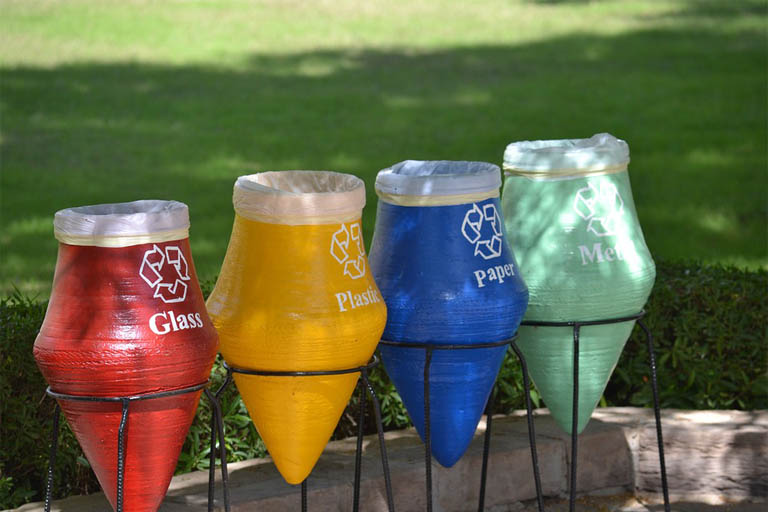
Image Source: Pixabay
The best way to avoid pollution is to stop it before it happens. Which is, of course, easier said than done. Still, there is some hope that things are at least beginning to move in the right direction. Current effort focus on educating the masses on the effects of pollution and the harm they cause on every living thing,
Such education manifests in several different ways. Educators focus on teaching people about:
- The types of pollutants and the effect they have on living creatures and the environment.
- The sources of pollutants (this makes it possible to eliminate various sources of pollution such as industrial discharges)
- Understanding the pathways of corruption that is from the source through the environment, and how it ends up in the human body or the ocean.
Other ways that could help reduce pollution include:
- Refueling your car in the evening
- Using reusable water bottles and not the disposables
- Implementing reduce, reuse, and recycle system
- Driving a hybrid or electric vehicle
- Avoid littering and educating the community on the same
- Planting more trees
- Avoid using open fires as waste disposal sites
- Stop smoking
- Using and buying eco-friendly materials and products
- Stay away from GMOs and pesticides
Ultimately, however, individual decisions or lines in the sand, while admirable, are not going to save the planet. Research shows that it is the implementation of public policies that help reduce the planet’s carbon footprint. For example, taking a billion cars off the road would see a 30% reduction in carbon footprint by 2030. That’s not something likely to happen voluntarily.
And since failure to take these measures may lead to unprecedented heatwaves, floods, droughts, or other unknown effects, the most environmentally affirmative action, any given individual can take is to vote. And vote for a candidate with a commitment to genuinely green policy initiatives.
Such initiatives need to focus on efficacy, not soundbites or populism. Since we understand which pollutants are most harmful and where they begin their journey, we must also know how the pollutant disperses.
A straightforward way to mitigate the damage already done then is to minimize the adverse effects of most liquid and gas pollutants by legislating against pollution, and then focusing on reducing the concentration of its elements already present in the water or air.
The New Ecological Reality
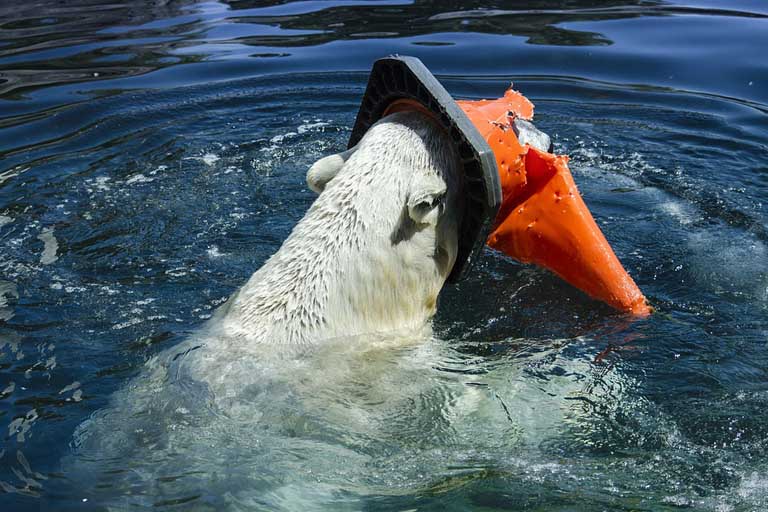
Image Source: Pixabay
Yes, the scale of air, land, and water pollution is alarming. The warnings of past decades went unheeded. Dates such as 2030, and 2050 do not seem as distant as they once did. And as talk shifts to global warming and the rising of sea levels, humanity must begin to take better care of the very planet he needs to survive by preventing and dealing with all these types of pollution.









